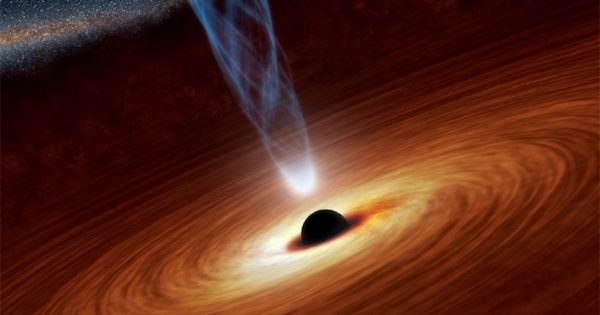
The discovery of the black hole LB-1 appears on Wednesday published in a study in the journal Nature, in which scientists from Spain, China, the United States, Italy, Poland and the Netherlands collaborated.
The Gran Telescopio Canarias, located on the Spanish island of La Palma, was one of those in charge of studying the black hole located 15,000 light-years from Earth to establish its characteristics.
Until now, scientists had estimated that the mass of a stellar black hole in our galaxy was no more than 20 times that of the Sun, but the discovery of this huge stellar object slain that assumption.
And the mass of this stellar black hole is 70 times that of our sun, a discovery that caused great surprise.
“Black holes of a mass like this should not exist in our galaxy, according to most current models of stellar evolution,” explained Professor Liu Jifeng of China’s National Astronomical Observatory and studio leader.
LB-1
Astronomers believe that very massive stars with the typical composition of the Milky Way should detach from most of their gases, in the form of powerful stellar winds, as they near the end of their life “and should not leave behind a remnant so masiv “O,” Liu said, referring to the black hole.
But LB-1 is twice as massive as might be possible and “now theorists will have to take on the challenge of explaining their training,” he considers the expert in a statement from the Chinese Academy of Sciences.
Until a few years ago, stellar black holes could only be located when swallowing the gas of a companion star, a process that creates powerful X-ray emissions that can be detected from Earth and reveal their existence.
But because the vast majority of these types of stellar black holes don’t usually swallow the gas from other stars, they don’t emit that signal, so so far only about two dozen were well identified and measured.
Star eight times heavier than the Sun
To try to address this limitation, the scientific team studied the sky with the Chinese LAMOST telescope hunting for stars orbiting an invisible object, although it was almost about finding a needle in a haystack, but they found it.
Once the first discovery was made, the largest telescopes in the world were used, the Gran Telescopio Canarias (GTC), 10.4 meters in diameter, and the Keck I in the United States, 10 meters, to determine the physical parameters of the system.
The results were “fantastic” as the system is made up of a star eight times heavier than the Sun, which every 79 days orbits a black hole 70 times the mass of our star.
This discovery, scientists recall, “fits perfectly” with another breakthrough in astrophysics: recently Ligo gravitational wave detectors (USA). Virgo (Italy) began to capture airwaves in space-time caused by black hole collisions in distant galaxies.
Interestingly-thenote -those black holes are much larger than what was considered typical and the discovery of LB-1 proves that these types of holes exist even in our galaxy.
“This discovery forces us to re-examine our models of how stellar mass black holes form,” ligo director David Reitze said.
“This remarkable result, along with the detections made over the past four years, by Ligo and Virgo of black hole binary collisions really point to a revival of our compression of the astrophysics of black holes,” he added.
"El reclamo puede ser genuino, pero construido sobre una mentira", apuntó el presidente Javier Milei…
El gobernador de la provincia de Buenos Aires, Axel Kicillof, encabezó un acto en Ensenada…
El diputado nacional de La Libertad Avanza, José Luis Espert, expresó su confianza en la…
Tras la masiva reaparición de Cristina Fernández de Kirchner, el presidente Javier Milei apuntó contra…
El principal propósito de la nueva comisión es evaluar los recursos humanos en el Senado,…
En una medida que busca redefinir las condiciones de los seguros de automóviles en Argentina,…
Esta web usa cookies.